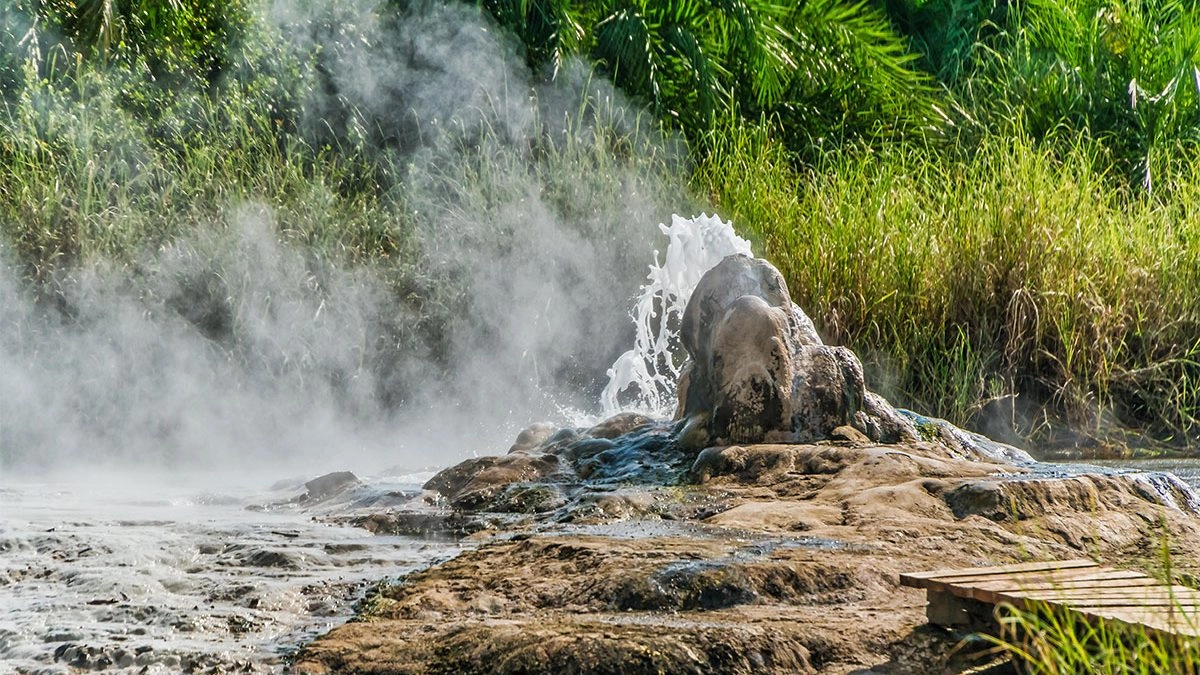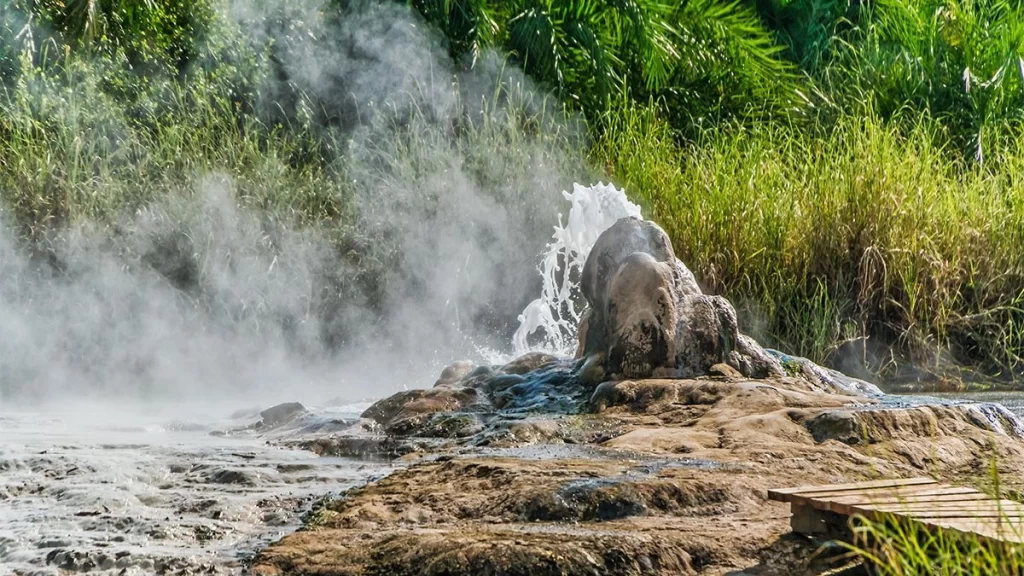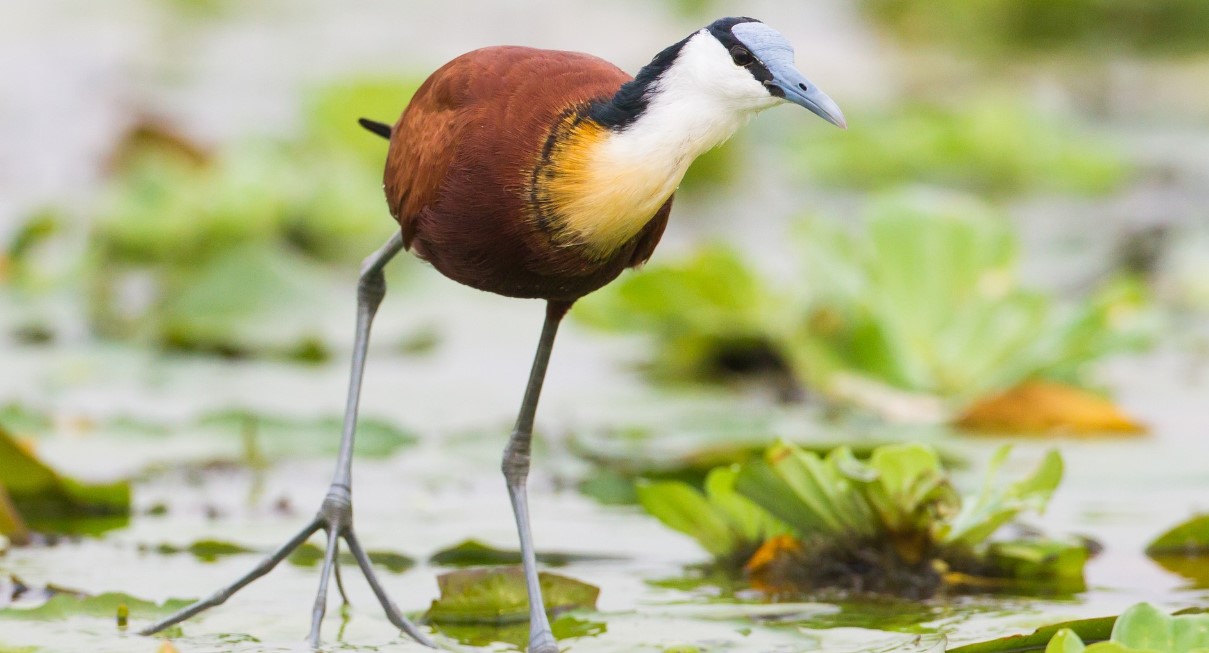Sempaya Hot Springs (Male and Female Hot springs )
Sempaya Hot Springs are the premier attractions of Semiliki National Park, situated at the periphery of the expansive Ituri Forest, which adjoins Uganda and the Democratic Republic of Congo in the secluded western region of the Rwenzori Mountain ranges in Bundibugyo District. The hot springs are the primary attraction for travelers visiting Semiliki National Park during Uganda safari tours, as they offer a once-in-a-lifetime experience that is highly recommended for all to enjoy.
Semiliki National Park is one of the lesser-visited national parks; yet, it is an exceptional location for birdwatching during Uganda safari trips, earning the title “Birders Haven,” and it is also home to the largest hot springs in Uganda. The park is situated across Semiliki Valley, characterized by Africa’s most ancient and biodiverse forest, the Ituri Forest of the Congo Basin. The Semiliki Valley encompasses some elements characteristic of Central African catchments rather than those of East Africa. Consequently, it is the sole national park in Uganda primarily comprised of lowland tropical forest, densely populated with features that have developed over 25,000 years, as evidenced by ancient processes, including hot springs that emerge from the depths, illustrating the potent subterranean forces that have shaped the rift valley over the past 14 million years. The hot springs are referred to as Sempaya. The name “Sempaya” originates from the Swahili term “Sehemu mbaya,” meaning “the difficult side,” reflecting the difficulty faced during the construction of the Fort Portal-Bundibugyo road along the ridges of the Rwenzori Mountain ranges, therefore the designation Sempaya hot springs.

The Sempaya Hot Springs have two distinct springs: the Female Hot Spring and the Male Hot Spring, each located in separate areas. Although scientists provide a technical account of the origins of the hot springs, the indigenous Bamaga clan residing near the Sempaya hot springs in Semiliki National Park possesses a compelling narrative regarding their existence.
The Male Hot Springs
While tourists regard the male hot springs as attractions, the indigenous Bamaga community considers them a sacred shrine dedicated to male deities, referring to them as Mumbugu. The male hot springs are linked to affluence and offerings made by men to placate male deities in return for prosperity. The Bamaga people think that the springs possess just a historical origin. Mzee Adonia Balinsanga, the leader of the Bamaga clan, asserts that the location of the male hot springs is historically significant. Historically, Bamaga women ventured into the forest to collect firewood when they encountered a hairy guy clad in backcloth, brandishing a spear, accompanied by a dog that moved in a zigzag pattern throughout the area. The women hurried home to inform their husbands, who then chose to bring him to their residences and subsequently arranged for him to marry a woman from the hamlet. The discovered man was thereafter dubbed Biteete, who persisted in hunting; nevertheless, on one occasion, he departed for a hunt and did not return. After three days, the men of the town resolved to search for him; however, they discovered only his spear, with no signs of him or his dog. At this juncture, they conjectured that the man vanished at the site of the waters, hence designating the location as the Male Hot waters.

The female Hot Springs
The local Bamaga tribe designates the inner female hot springs as Nyasimbi, believing that the sacred site of their female deities resides within the waters. Upon their return, the men who searched for Biteete recounted to his wife, Nyansimbi, that she subsequently ventured into the forest and vanished from the same location where her garments were found among the other springs, now known as the Female hot springs. The two springs were designated as Female and Male hot springs, and to this day, the Bamaga people maintain the belief that their female ancestors reside beneath the Female hot springs, while their male ancestors dwell beneath the Male hot springs. The Bamaga tribe continue to conduct annual rituals at the springs to honor their ancestors. Despite the region being designated as a national park, access to the springs is permitted. During a safari tour at Semiliki National Park, one may observe the local populace bathing in the springs to invoke blessings from their ancestors. The female hot springs are purportedly beneficial to local women who visit to make sacrifices and give prayers to honor their female ancestors. They beseech the feminine deities for fertility and implore the gods for safe birth.
The Sempaya hot springs are situated within a 30-minute walk from the main road, accessible via the woodland trails of Semiliki National Park. Upon arrival at the springs, one is captivated by the breathtaking spectacle of scalding hot water erupting, bubbling, and shooting from the ground at approximately 103 degrees Celsius. The hot springs are excessively hot, allowing tourists to boil simple things such as eggs or plantains in the water. In addition to viewing the Sempaya hot springs, guests can engage in various other activities provided by Semiliki National Park during Uganda safari tours. This park features a diverse array of attractions, including the Ituri Forest of the Congo Basin, the Semuliki River that traverses the Rwenzori Mountains and drains into Lake Albert, as well as wetlands and woodland plants that support many bird and game species. Consequently, additional things to engage in during your vacation to Sempaya hot springs encompass;

Wildlife Watching
Wildlife observation; Toro The Semiliki Wildlife Reserve is a component of Semiliki National Park, featuring savannah grasslands conducive to game viewing. Semiliki is home to approximately 53 animal species, including pygmy hippos, bush babies, Uganda kobs, white-tailed mongooses, buffaloes, forest elephants, warthogs, and crocodiles, among others. Nocturnal game drives are feasible in Semiliki National Park, where many night animals, such as bush babies and white-tailed mongooses, can be observed. Game viewing is most effectively conducted in the morning, evening, and at night. The fee for foreign non-residents to enter the park for a wildlife drive is $35, while East African natives are charged 10,000 Uganda shillings.
Bird Watching
Birdwatching in Semiliki National Park; Semiliki National Park boasts over 400 recorded bird species, establishing it as a premier birding destination in Africa, gaining the designation of “True Birders’ Haven.” Approximately 130 species from the Guinea-Congo forest biome have been documented in Semuliki Forest. Additional avian species comprise the Capuchin, white-tailed/Piping hornbill, blue-headed crested flycatcher, Orange Weaver, and Red-billed Malimbe. Semuliki National Park is in proximity to Mount Rwenzori, where the Semuliki River meanders along the western boundary, ultimately flowing into Lake Albert, which is encircled by marshes that harbor avian species such as the Papyrus Gonolek and Caruther’s Cisticola. The regions surrounding Sempaya, River Kirumia, and Ntandi are exceptional locations for avian observation. Designated pathways are available for birdwatchers to locate various bird species.

Cultural Experience
A cultural tour of the Batwa hamlet in Semiliki National Park offers an additional experience for all travelers. The Batwa are the indigenous inhabitants of the region prior to its designation as a national park or reserve. The pygmy Batwa people relied on hunting for sustenance, beekeeping, and derived their livelihood, including food, tools, medicine, and shelter, from the Semiliki forest. The Batwa people currently draw tourists due to their status as indigenous inhabitants of Uganda. Upon visiting them, you will gain insights into the lifestyle of the Batwa people and see their cultural acts, including traditional dance, drama, and music. A cultural town has been established as their residences.
Experiences in nature treks and hiking
Although hiking and nature hikes are available in other tourist areas in Uganda, experiencing them in Semuliki National Park is particularly captivating. Semuliki National Park offers three hiking trails: the Kirumia Trail, which traverses the forest to the Semuliki River; the Sempaya Nature Trail, which directs visitors to the hot springs and primates; and the Red Monkey Track, which leads to the park’s eastern boundary, home to the rare De Brazza’s monkey.
Where to stay (Accommodation Options)
Accommodation options are offered in luxury, mid-range, and budget categories. Semuliki National Park lacks on-site accommodations for visitors; the sole options for lodging are hotels in Bundibugyo town or lodges within the Toro-Semuliki Wildlife Reserve, such as the luxury Semuliki Safari Lodge, Ntoronko Game Lodge, Bamaga Bandas, and a campsite. These facilities are managed by the Uganda Wildlife Authority and cater to budget-conscious backpackers.
